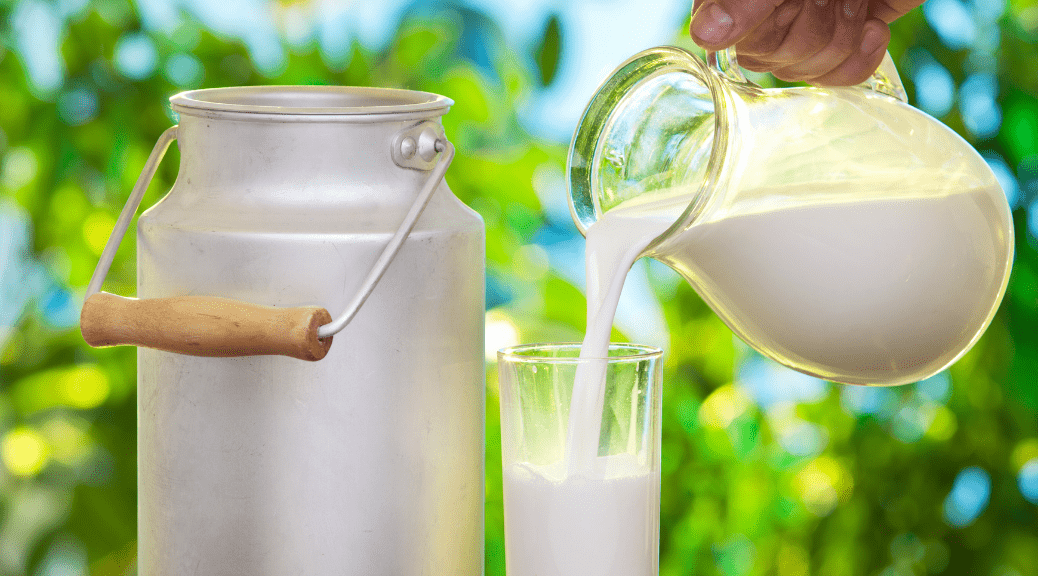Toned Milk – Think, know, check, and boil before you drink it

Like more fat content can be used to claim superior value for full-cream milk, health enthusiasts will vouch for the less fat in toned milk. It’s all about priorities, convictions and convenience. And convenient it certainly is, getting our regular supply of milk in neat little packs, all stacked in neat little sections at the grocer’s down the street. More and more consumers are switching to branded packaged milk due to concerns regarding adulteration (with water, vegetable oils, detergents, caustic soda, urea, starch, blotting paper, white paint, you name it). The perception that loose milk is fresh is not as entrenched any more. This report will, among other things, put to rest most of our concerns about milk adulteration and contamination, and affirm or dispute the health-related claims of leading brands of packaged toned milk. It may be noted that the food regulator of India prescribes certain microbiological requirements for plant level but not at retailer level. This is a yawning gap and since consumers buy their milk from retailers, we checked the samples for critical safety aspects. A couple of findings from our test results will establish that the important determinants of quality vary across brands.
A Consumer Voice Report
We tested nine popular brands of packaged toned milk on a range of quality, safety and acceptability parameters. These included milk fat, milk solids not fat, saturated fat, cholesterol, calcium and vitamin A. Milk is expected to be high in fat content as well as milk solids not fat (SNF), which is an indicator of the quality of milk. The brands were further subjected to adulteration tests, microbiological tests, tests for lead and arsenic, phosphatase test and sensory (organoleptic) tests. The tests were conducted at an NABL-accredited laboratory.
The samples were tested as per specification laid out by FSS Regulations, 2011, and relevant Indian Standard IS: 13688: 1999 reaffirmed in 2014 for ‘packaged pasteurized milk’ wherein the categorisation of milk has been done based on minimum quantity of milk fat and SNF present.
Brands tested
So, here are the test results and rankings. The table below will show you which brand secured the highest and lowest positions.
|
Rank |
Total Score out of 100 (rounded off) |
Brand |
MRP (Rs) |
Net Quantity (ml) |
Manufactured/Marketed by |
|
1 |
88 |
Ananda |
21 |
500 |
Gopaljee Dairy Foods Pvt. Ltd |
|
2 |
87 |
Kwality |
21 |
500 |
Kwality Ltd |
|
2 |
87 |
Heritage |
20 |
500 |
Heritage Foods Ltd |
|
2 |
87 |
DMS |
21 |
500 |
Delhi Milk Scheme |
|
3 |
86 |
Madhusudan |
21 |
500 |
SMC Foods Ltd |
|
3 |
86 |
Mother Dairy |
21 |
500 |
Mother Dairy Fruit & Vegetable Pvt. Ltd |
|
4 |
85 |
Namaste India |
21 |
500 |
NIF Pvt. Ltd |
|
4 |
85 |
Amul |
21 |
500 |
Gujarat Cooperative Milk Marketing Federation Ltd |
|
5 |
84 |
Paras |
21 |
500 |
VRS Foods Ltd |
Score Rating: >90: excellent*****, 71–90: very good****, 51–70: good***, 31–50: average**, up to 30: poor*
CV Recommendations
Top Performer
Ananda
Value for Money Brand
Heritage
Key findings
- Based on the overall score, the top performer is
- The value-for-money brand is
- Most of the brands have standard fat content to just meet the minimum requirement of 3 per cent for fat and 5 per cent for SNF.
- All brands of packaged milk were found free from adulterants such as neutralizers, detergent, caustic soda, urea, formaldehyde and
- Food regulator has not prescribed microbiological-safety requirements for aerobic plate count and coliform
- All nine brands of milk were found within the specified limits for microbiological The tested samples fulfilled the total plate count requirement at plant level (to be below 30,000 cfu/ml).
- Arsenic and lead were not detected in any of the
- In sensory panel tests, Paras performed on top followed by Heritage
Packaged milk can be categorized according to fat and solids-not-fat (SNF) content as follows:
- Full-cream milk: Fat 0 per cent and SNF 9 per cent (minimum)
- Toned milk: Fat 0 per cent and SNF 8.5 per cent (minimum)
- Double-toned milk: Fat 5 per cent and SNF 9 per cent (minimum)
Full-cream milk means milk or a combination of buffalo or cow milk or a product prepared by combination of both that has been standardized to fat and solids-not-fat (SNF) percentage, by adjustment/addition of milk solids. It shall meet the minimum laid-down requirement of 6 per cent for fat and 9 per cent for SNF. Full-cream milk shall be pasteurized. It shall show a negative phosphatase test. It shall be packed in clean, sound and sanitary containers properly sealed so as to prevent contamination.
Toned milk means the product prepared by admixture of cow or buffalo milk or both with fresh skimmed milk; or by admixture of cow or buffalo milk or both that has been standardized to fat and solids-not-fat percentage by adjustment of milk solids. It shall meet the minimum laid-down requirement of 3 per cent for fat and 8.5 per cent for SNF. It shall be pasteurized and shall show a negative phosphatase test.
TEST PARAMETERS
Milk Fat
Fat is an essential part of any balanced diet, providing essential fatty acids, fat-soluble vitamins and a concentrated source of energy. The fat content of milk is the proportion of milk made up by butterfat. As per Indian Standard and FSS Regulations, 2011, fat content of toned milk should not be less than three per cent by mass.
- All brands met the minimum required limit for fat
- DMS (3.30 per cent) had the highest fat content, followed by Ananda, Heritage, Madhusudan, Mother Dairy and Namaste
- Amul, Paras and Kwality (3.0 per cent each) just about fulfilled the minimum
Solids Not Fat (SNF)
Milk has mainly two parts: fat and solids not fat (SNF). Apart from fat, all other solids such as protein, lactose, vitamins and minerals together make up SNF. SNF is the most essential part of the milk. As per Indian Standard and FSS Regulations, it should not be less than 8.5 per cent by mass.
- All brands met the minimum requirement for It was highest in DMS (8.7 per cent).
Vitamin A
Vitamin A is essential for good health – notably for eyes and skin, immune function, reproduction and bone growth. Milk is a rich source of vitamin A. And is expected to have a higher amount of it
- Vitamin A content was found highest in Kwality (281.4 IU or international units/100 ml), followed by Ananda (134.3 IU). It was lowest in Namaste India (37.3) and Paras (42.9).
Calcium
Milk is a well-known source of calcium and hence expected to be rich in calcium content.
- Calcium content was highest in Namaste India (160 mg/100 ml), followed by Heritage (156.4). It was lowest in Amul (124.4).
Cholesterol
Cholesterol, especially bad cholesterol, also increases the risk of nervous-system problems, brain- synapse connectivity, gall-bladder stones and perhaps even cancer. These cholesterols are inherently found in the milk fats. The intake of cholesterol should not be more than 300 mg/day.
- Paras (66.70 mg/100 ml) had the lowest cholesterol content, followed by Heritage (69.80 mg/100 ml).
- Namaste India (82.8 mg/100 ml) had the highest cholesterol content, followed by DMS (80.2 mg/100 ml).
Saturated Fat
Saturated fats are inherent fats in milk.
- Saturated fat in the tested brands was in the range of 2.2 per cent to 2.4 per cent. It was highest in DMS (2.4 per cent).
PHYSICOCHEMICAL SCORES
| Parameter | Weightage (%) | Ananda | Kwality | Heritage | DMS | Madhusudan | Mother Dairy | Namaste India | Amul | Paras |
|---|---|---|---|---|---|---|---|---|---|---|
| Milk fat | 12 | 9.12 | 8.4 | 9.12 | 10.56 | 9.12 | 9.12 | 9.12 | 8.4 | 8.4 |
| Milk solids not fat | 12 | 8.4 | 9.12 | 8.4 | 9.84 | 8.4 | 8.4 | 9.12 | 8.4 | 9.12 |
| Vitamin A | 7 | 6.42 | 7 | 4.73 | 4.11 | 4.42 | 4.62 | 3.84 | 5.43 | 4 |
| Calcium | 6 | 4.72 | 4.9 | 5.35 | 4.7 | 5.12 | 4.85 | 5.52 | 3.81 | 4.94 |
| Cholestrol | 5 | 3.72 | 3.54 | 4.22 | 3.38 | 3.81 | 3.95 | 3.18 | 4.12 | 4.46 |
| Saturated Fat | 5 | 3.4 | 3.4 | 3.4 | 2.8 | 3.4 | 3.1 | 3.4 | 3.4 | 3.4 |
FOR MICROBIOLOGICAL ACTIVITY
Total Plate Count | Coliform Count | Methylene Blue Reduction Time
Microbiological contamination is a very serious issue for milk. Microorganisms are responsible for many food-borne diseases. We conducted tests for total plate count, yeast and mould count, coliform count, E. coli, aureus, Salmonella, Shigella, Listeria monocytogenes, anaerobic spore count, and methylene blue reduction time (MBRT).
Total plate count
The total plate count is a measure of the biological activity in milk sample. This is a count of all bacteria that will grow in aerobic conditions. For pasteurized milk, microbiological requirements have been prescribed for aerobic plate count, coliform count and S. aureus only at manufacturing-process level; there is no requirement given at market/retailer level. Since consumers buy milk from retail shops, requirements should be specified accordingly. We conducted the microbiological tests on poly-packed milk purchased from retailers. As per FSS Regulations, total plate count should not be more than 30,000/gram at plant level.
- None of the brands exceeded the specified limit
- Total plate count was found highest in Paras (13,000 cfu/ml) but it was within the specified limit.
Coliform Count
Coliform bacteria are destroyed at a temperature of about 46 degrees C, which means pasteurisation can easily eliminate them up to a certain number. The presence of coliform bacteria in pasteurized milk indicates that there were unsanitary conditions or practices after pasteurisation and before packing in the milk plant itself.
Methylene blue reduction time (MBRT), in hour
Methylene blue reduction time is an indicative test to check the bacterial load in milk. As per Indian Standard, MBR time for milk is not less than five hours.
- Except Paras, all other brands met the requirement for MBRT
|
Microbiological Tests |
|
|
Brand |
Score out of 12 |
|
Madhusudan |
11.55 |
|
Heritage |
11.52 |
|
Ananda |
11.49 |
|
DMS |
11.49 |
|
Mother Dairy |
11.49 |
|
Amul |
11.46 |
|
Namaste India |
11.40 |
|
Kwality |
11.10 |
|
Paras |
8.80 |
FOR SENSORY ATTRIBUTES
Panel members judged the samples for these sensory attributes: colour and appearance, odour, flavour and taste. Conducted under the supervision of trained experts, these tests were based on IS: 7768- 1975. Among other things, milk should be free from suspended particles, filth and foreign matters. It should not have stale, acidic or any other abnormal odour. Milk should not have any cooked, oxidized, rancid, metallic or neutralizer flavour. It should be free from any objectionable flavour due to adulterants and other additives. Milk should be free from watery, ropy and curdy body.
- All brands performed well in the sensory
- Paras was rated as the more acceptable brand and was followed by
- The least liked brand was Kwality
|
Brand |
Score out of 10 |
|
Paras |
9.54 |
|
Heritage |
9.42 |
|
Amul |
9.33 |
|
Ananda |
9.32 |
|
Mother Dairy |
9.32 |
|
Madhusudan |
9.30 |
|
DMS |
9.06 |
|
Namaste India |
8.90 |
|
Kwality |
8.71 |
Packing and Marking
- Milk should be packed in food-grade poly pack to retain its natural properties within its shelf life. Each packet of milk should be marked/ labelled with these particulars:
- Name and type of product with proper prefix (toned, full cream, etc.)
- Name and complete address of manufacturer and manufacturing unit/ packerc)
- Batch or code numberd)
- Net quantity in litre/millilitree)
- ‘Use by’ date
- MRP
- Storage instructions
- Nutritional information per 100 ml
- Name, address, telephone number, email address of person/office to be contacted in case of consumer complaints
- All brands were properly packed in poly packs.
- All brands provided all required information on their pack.
- Net quantity in all brands was as claimed on the packs.
Related
Decoding Cyber Coverage in India: Your Ultimate Guide
In today's technology-driven landscape where digitalization is ubiquitous, companies confront an escalating threat landscape in the form of...
Navigating Insurance Options: Comprehensive Coverage for Diabetics in India
As the prevalence of diabetes continues to rise steadily in India, individuals grappling with this chronic condition encounter myriad challenges,...
Understanding International Travel Insurance
International travel insurance serves as a financial product crafted to shield travellers from unforeseen events and expenses while journeying...


